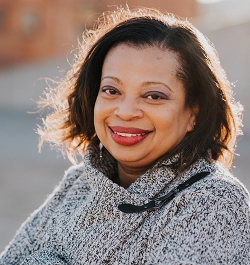Top-Level Takeaways
- Eight years ago, Seattle Credit Union set out on a mission to ensure its board of directors better represented its membership.
- Term limits, exhaustive networking, and building a foundation of trust were key elements in the transformation of the board. That, and acknowledging the DEI journey never ends.
The board of directors of Seattle Credit Union ($896.4M, Seattle, WA) boasts a diverse mix of racial and ethnic groups, genders and sexual identities, and industries prevalent in the Pacific Northwest, including technology and aerospace. In fact, the credit union is well-known locally for its diversity and inclusion.
This idyllic composition was not always the case, however, and the transformation did not happen overnight or by chance.
“It was a long and sometimes exhausting process,” says Tonita Webb, executive vice president, about the credit union’s eight-year journey to a more diverse board.
Like many cooperatives, Seattle Credit Union’s previous board was composed long-tenured members who had served for 30, 40, or even 50 years, and they did not want to give up their positions. Initial conversations about change were awkward, but change was necessary.
Making Room. Finding New Candidates.
Introducing term limits created the opportunity to add new voices and better represent the credit union’s current membership. So did aggressive networking, especially among diverse communities.

“Our CEO is Latinx, and I’m a Black American, so we went into our networks like there was no tomorrow and asked others for names in their networks,” Webb says. “With only 5% of Seattle’s population being Black, recruiting diverse candidates can be difficult, but it is possible. The key is reaching out to someone who is different from you whether that is the LGBTQ+ community, Asian American community, or a different industry.”
The credit union hosts an annual open house event during board election season to introduce prospective candidates to the credit union industry and the cooperative’s mission to serve the underserved. Some prospects are already members, but others learn about what the cooperative offers and join it as a result. Still, building a diverse board requires intent and tenacity.
“It’s not easy,” Webb says. “Even when you find a new candidate, the membership still has to elect them.”
After Seattle Credit Union’s networking and education efforts took root, slowly but surely, more diverse board candidates began to win election. And, attracting and electing new board members has become easier recently as the cooperative has established itself as an example of diverse leadership.
It’s not that we want all people of color. We need a mix of everyone because that’s what makes us Seattle.
The credit union has never had any hard and fast rules regarding board composition, but the goal to build a board that better represents the entire membership has been a driving force. That includes maintaining representation of its long-standing member base as well.
“It’s not that we want all people of color,” Webb says. “We need a mix of everyone because that’s what makes us Seattle.”
A Successful Structure For DEI
On the topic of diversity, equity, and inclusion (DEI), Webb notes there is no quick fix.
“You can’t bring in a consultant to give you a statement and a policy and think you’re good to go,” the EVP says. “It is years of work because you’re changing a whole culture, changing mindsets, and changing biases our great grandmothers and grandfathers gave us.”
Organizations, and individuals, need time to address sensitive subjects and unconscious biases they might have never considered. The first step, according to Webb, is to establish a foundation of trust.
“Whether it is on the board or within your organization, people have to trust they are able to show up as themselves and speak up when something is happening that isn’t entirely right,” she says. “If that trust isn’t there, it’s difficult to retain diverse board members and new hires, who quickly sniff out such deficiencies.”
How To Take Action On DEI
LISTEN TODAY

Second, DEI needs to empower employees across the entire organization. Top-down management is prevalent in the financial services industry; that won’t work for DEI programs.
“DEI does not thrive in a top-down environment, and it should not be in HR,” Webb says.
Despite her background and belief in the importance of human resources, Webb says it all comes down to a foundation of trust, and the department linked to discipline and terminations might not be able to build trust 100% with employees.
Seattle Credit Union houses its DEI efforts within its community partnerships department, aligning DEI with a strategic initiative. A vice president that reports to the EVP leads the department, which works closely with community groups to target underserved markets. With this structure, the credit union hears firsthand about clear challenges.
“We’re hearing straight from the horse’s mouth about the difficulties these potential members have and how these communities are feeling discriminated against,” Webb says.
For example, linking DEI with community partnerships helped the credit union learn it needed representatives who spoke more languages to better serve its communities.
Setting Goals. Measuring Progress.
Seattle Credit Union’s field of membership includes one of the fastest-growing immigrant populations in the country, so the credit union partnered with the City of Seattle to develop a citizenship loan program. One of the goals, as identified by the community partnerships department, was to increase the number of languages spoken by credit union representatives, so the credit union concentrated its hiring based on that need.
To complement these external initiatives, the credit union also underwent internal DEI and bias training for several years.
“This included deep dives and some serious soul searching to figure out who we are,” Webb says.
This internal work began before the board change, and when the board composition had changed enough, the directors decided to make DEI a strategic goal for the entire organization to ensure the cooperative continues its diverse hiring practices.
This year, Seattle Credit Union launched a DEI survey to measure whether people feel like they can show up as themselves to work, whether they feel empowered, and whether their voices are heard. The board is going to measure progress toward its strategic goal based on this survey.
DEI As A Core Value And Mission
Although a lot of conversations about DEI are taking place within the industry, Webb says the blanket assertion that credit unions have always believed in and practiced DEI makes her cringe. This is especially noteworthy as many credit unions were chartered in the 1930s when the United States was still racially segregated.
“The first step toward change is admitting we haven’t always gotten it right and then figuring out how to change,” Webb says. “Even now, Seattle Credit Union’s leaders often find themselves the only people of color at industry events.”
This is one reason she says it’s critical for credit unions to adopt diversity and inclusion as a core value.
“If you don’t have something to aspire to, it won’t be top of mind,” Webb says. “The addition of a core value ensures your organization will measure progress and set up the processes needed to accomplish it.”
That said, Webb emphasizes that attaining diversity, equity, and inclusion is not a job that is ever really done.
“Yesterday I discovered something new to add to our curriculum, today there is more work to do, and tomorrow I’ll discover something else,” Webb says.
There is a lot to uncover, and it will take time to achieve goals. The enormity of DEI can be overwhelming, and no one expert has it all figured out. That’s where the strength of the cooperative model comes into play.
“Everyone is in this,” Webb says. “It’s not just white people, it’s all of us. We’ve all been impacted by racism in more ways than one.”
The good news, today, is that these conversations are still happening. The good news tomorrow will be evident in the change that takes root.
“The industry is evolving, and I love that,” Webb says. “People shouldn’t beat themselves up over not getting everything right. Thinking about how we can expand our minds and recognize our biases is progress. That is the goal to continue to evolve.”